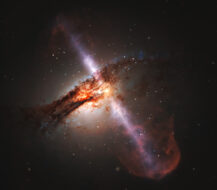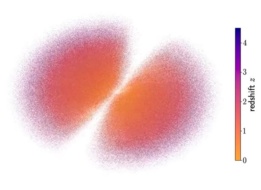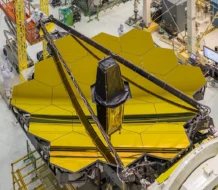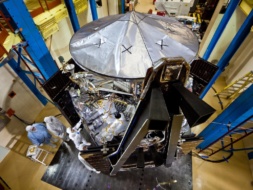On Sunday, Northrop Grumman launched the NG-18 mission, sending a Cygnus full of supplies and new science experiments to the ISS.
After the Antares launcher deployed the Cygnus capsule, a problem arose: One of the craft’s two solar arrays failed to deploy. Luckily, it still had enough power to reach the station. Early yesterday morning, the crew used the station’s robotic Canadarm to capture the craft and bring it in to dock.
The ISS crew received an exciting shipment—40 new science experiments for the microgravity environment, including seven courtesy of the National Science Foundation.
Stop the flow: The first of the seven experiments stems from a destructive mudflow that killed 21 people in California in 2018. Through parallel experiments on the ISS and on the ground, a research team will examine the effects of gravity on mudflows in hopes of forming a better system for early warning and risk detection.
Have a heart: A research team at the Emory School of Medicine plans to grow cardiac muscle cells in a dish. The microgravity environment allows the researchers to use tissue engineering to accelerate the development of cardiac muscle cells, which could potentially be used to replace damaged cells in people suffering from heart disease.
Mix and mingle: Oil and water don’t mix…or do they? One NSF experiment will investigate what happens when two fluids that don’t mix are placed under different conditions. The researchers hope to learn more about how these fluids combine at a microscopic level, and the findings could have applications in medicine and engineering
Strong bones: Bones don’t like the microgravity environment. Prolonged stays in space lead to lower bone density in astronauts, and those effects can’t always be reversed upon return to Earth. A University of Michigan team will study the effects of compression on osteoblasts—i.e., bone-forming cells—to see if they can solve this problem.
Bubble, bubble: Three different NSF experiments involve blowing bubbles in the microgravity environment.
- A team from the City College of New York will investigate how foams and emulsions behave in microgravity.
- A researcher will use light to manipulate the surface tension of floating droplets, controlling them remotely.
- A collaboration between Auburn and UC Davis will use engineered surfaces to try to encourage vapor bubbles to detach, speeding up heat dissipation.




